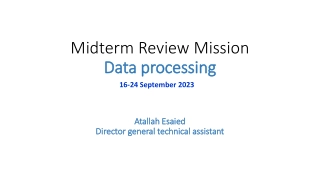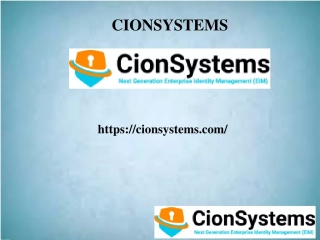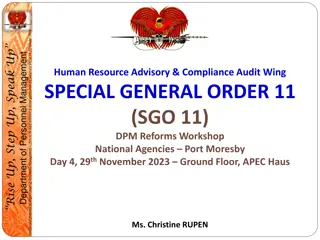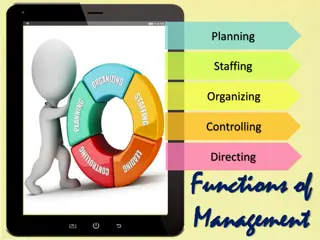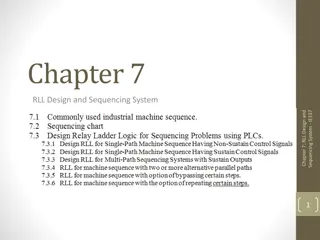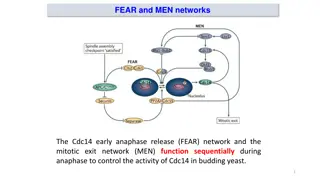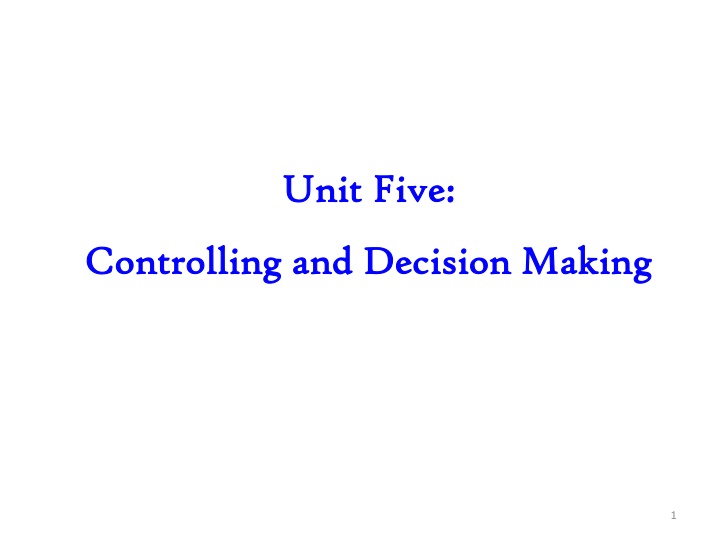
Controlling and Decision Making Process
Explore the importance of controlling in management, including defining, monitoring, and evaluating performance. Learn about the stages of controlling, types of controls, and forms of management control for effective decision-making.
Download Presentation

Please find below an Image/Link to download the presentation.
The content on the website is provided AS IS for your information and personal use only. It may not be sold, licensed, or shared on other websites without obtaining consent from the author. If you encounter any issues during the download, it is possible that the publisher has removed the file from their server.
You are allowed to download the files provided on this website for personal or commercial use, subject to the condition that they are used lawfully. All files are the property of their respective owners.
The content on the website is provided AS IS for your information and personal use only. It may not be sold, licensed, or shared on other websites without obtaining consent from the author.
E N D
Presentation Transcript
Unit Five: Unit Five: Controlling and Decision Making Controlling and Decision Making 1
Session Objectives Define controlling , monitoring & evaluation Determine the purpose of M&E Describe the relationship b/n M&E Identify the types of evaluations Evaluate the characteristics of indicators 2
Controlling Controlling Management Control is the process of ensuring that actual activities conform to planned activities. Taking preventive / corrective action to keep things on track is an essential part of control process primary aim of control is to improve performance 4
Stages /steps of Controlling 1. Establish standards of Expected performance 2. Measure actual performance 3. Compare performance against standard 4. Evaluate the comparison and take appropriate corrective action. 5
Controlling. Types of Controls Types of Controls 1.Feed forward Control 1.Feed forward Control The active anticipation and prevention of problems, rather than passive reaction. Monitor inputs 2.Concurrent Control 2.Concurrent Control Monitoring and adjusting ongoing activities and processes. 3.Feedback Control outputs/products 3.Feedback Control outputs/products Checking a completed activity and learning from mistakes. 7
Forms of Management Control: Forms of Management Control: There are three basic forms of management control: 1. Monitoring 2. Supervision 3. Evaluation. 8
1. MONITORING 1. MONITORING - Monitoring = routine and continuous tracking of planned activities - It is the day-to-day watch on, or continuous follow up of, the on going activities. - It is regularly checking to see that program activities are being done as planned. - It is carried out through observation, discussionand review of reports, statistical data. 9
MONITORING MONITORING The goals of monitoring are: To identify any problem early, and To solve without delaying the progress of the program. Hence it is a basic part of implementation management. 10
2. Supervision 2. Supervision: Intermittent processes to be conducted by the management in line with controlling. A single person should not go for supervision The three main styles of supervision are autocratic, and democratic. Autocratic supervisions tend to humiliate/injury the dignity/ people, make them irresponsible and mostly one way. It may dry up the initiative of colleagues. Democratic supervision helps people to grow become responsible for their own work to show initiative 11
3. Evaluation 3. Evaluation Evaluation = periodic (e.g., annual) assessment of whether program objectives have been achieved Is systematical and periodical gathering, analyzing and interpreting of information on the operation as well as the effects and impacts of a development programme/project. Assess the contribution and worth of an intervention. It involves the comparison of the actual performance of the system 12
Evaluation. The results of evaluation are expected to show: What a program has been trying to do; What actually happened; Where there are differences/gaps between plans and what happened The reasons for the difference/gaps, and What needs to be done about them? The Purpose is: to note short comings, deficiencies, duplicates, generate of knowledge etc. in the system. 13
Distinctive Characteristics of M & E Distinctive Characteristics of M & E Characteristics Monitoring Evaluation Purpose/objective Specific Broad Scope Narrow Broad Frequency Continuous Periodic Data Gathered Primarily Quantitative Primarily Qualitative Focus Inputs/Outputs Impact and Sustainability Provides detailed information on what type of actions to take Alerts when to take action Uses 14
Distinctive Characteristics of M & E Distinctive Characteristics of M & E Character Monitoring Evaluation What does it answers? - Activities performed - Problems encountered - Why and how results were achieved or not - Strategy and policy options Actors Internal Internal/External Analysis Simple Comparative Analytical tools Primary Users Small group/project Managers Large group /Project Managers, planners, Financers, etc.) 15
Types of Evaluation Types of Evaluation 16
TYPES OF EVALUATION TYPES OF EVALUATION Some authors use the terms Input, Process, output ,Outcome &Impacts to determine the value of a program Others use the term Formative/diagnostic or progressive Evaluation to Evaluate input and process. it is performed during implementation. Summative or Terminal Evaluation to evaluate output, outcome, & impact it is done at the conclusion of the program. focus on long term ultimate results 17
Types of Evaluation .. Types of Evaluation . . Based on people primarily responsible to lead evaluation activities, evaluation could be classified as: Internal Evaluation External Evaluation 18
Internal Evaluation Internal Evaluation Evaluation activities designed and implemented primarily under a leadership implementers from program Usually serve information for program improvement by supplementing monitoring activities 19
External Evaluation External Evaluation Evaluations designed and implemented primarily by people who are relatively more distant from the program (external evaluators) Used when: objectivity is a concern because of issues related to the purpose of the evaluation concerns of multiple stakeholders included in evaluation questions evaluation expertise beyond the organization s capacity is required to answer evaluation questions 20
Program Components INPUTS Processes OUTPUTS OUTCOMES IMPACTS 21
Program Components Inputs Resources used in a program, such as money, staff, curricula, and materials. Examples: Health workers Anti-TB drugs Laboratory reagents IEC materials Processes/ Activities Services that the program provides to accomplish its objectives Examples: Training health workers for counseling and testing Screening patients for opportunistic infections Conducting supervision Educating women 22
Program Components Outputs Are the immediate products or deliverables of the inputs utilized and program activities conducted Examples: Number of patients treated Number of clients counseled Number of condoms distributed Number of HIV tests carried out 23
Program Components Outcomes Benefits that individuals, groups, communities realize. The change that occur on the target beneficiaries due to program output. such as changes in knowledge, attitudes, beliefs, skills, behaviors, access, policies, and environmental conditions Examples: Increase of condom use Improvement of quality of healthcare Reduction of risky sexual behaviors 24
Program Components Impacts Long-term results of one or more programs over time, such as changes in HIV infection, morbidity, and mortality Examples: Reduction in incidence of HIV infection Reduction of HIV/AIDS mortality Improvement in quality of life of patients 25
INDICATORS Development & selection for M&E If you cannot measure results, you can not tell success from failure! 26
indicators are: A variable or summary of variablesthat Measures key elements of a program or project Indicators provide critical M&E data at every stage of program implementation Inputs, process, outputs, outcomes and impact 27
Indicators are signals which show; Whether we are on the right track & direction, How far we have progressed How far we still have to go to reach our destination/objectives 28
Types of indicators Indicators could be classified based on different aspects: Relationship with the subject of interest The nature of information they provide The component of a program they measure 29
Types of indicators cont Based on their relationship with the subject of interest Direct indicators Indirect (proxy) indicators 30
Types of indicators cont Direct indicators Are indicators directly related to the subject intended to be measured E.g. Proportion of children vaccinated in X district is direct measure of EPI program output 31
Types of indicators cont Indirect/proxy indicators They speak about a subject of interest only indirectly are used to measure change or results where direct measures are not feasible Example: Monthly expenses of patients could be used to estimate their monthly income. Client satisfaction may be used to measure the quality of service 32
Types of indicators cont Based on the nature of information, indicators could be classified as Quantitative indicators Qualitative indicators 33
Types of indicators cont Quantitative indicators Are indicators which are measured numerically Include counts/frequencies, ratios, percentages, rates, averages Example Number of patients treated Prevalence of HIV 34
Types of indicators cont Qualitative indicators Are indicators which are measured non- numerically Usually applied when quantitative indicators are not applicable are more subjective than quantitative indicators Example Cleanliness of a hospital 35
Types of indicators cont Based on the component of a program the indicator measures, indicators could be classified as: 1. Input indicators: Measures the actual use of resources 2. Process indicators: Measures the activities performed 3. Output indicators: Measures what is accomplished with inputs 4. Outcome indicators: Measures the direct and immediate impact 5. Impact indicators: Measures the indirect and longer-term impact 36
OUTPUT IMPACT INPUT PROCESS OUTCOME Providers trained in PMTCT service provision Reduced perinatal transmission of HIV Human and financial resources Conduct one PMTCT training workshop in each district for providers Increased use of PMTCT services Indicator: percent of infants HIV- born to HIV+ women Indicator: # of providers who have completed clinical training Indicator: percent of HIV+ women receiving a complete course of ARV prophylaxis Indicator: % of pregnant women who are HIV tested 37
Characteristics of Good Indicators Valid: accurate measure of a behavior, practice or task Reliable: consistently measurable in the same way by different observers Precise: operationally defined in clear terms Measurable: quantifiable using available tools and methods Timely: provides a measurement at time intervals in terms of program goals and activities 38
Data sources to measure Indicators Data sources to measure Indicators Using Pre-Defined Indicators Surveillance Routine service reporting Special program reporting systems Administrative systems Vital registration systems Facility surveys Household surveys Censuses Evaluation and special studies 39
Self learning Self learning Decision making Decision making 40
At the end of the session students be able: Define decision making Describe the relationship b/n decision making and other functions of mgt Describe categories of decisions Decision making steps Identify factors influencing problem solving & decision making 41
Decision Making . . . Decision Making . . . Decision-making: the process of identifying and selecting a course of action to solve a specific problem. Decision making is a major part of management because : When planning, organizing, staffing, leading, and controlling, managers make decisions on a daily basis. It requires choosing among alternative courses of action. Decisions must be made at many levels in an organization from executive decisions on the goals to the day to day repetitive operations performed by lower level managers. 42
Interrelations of the mgt process functions Interrelations of the mgt process functions Planning Controlling Organizing Leading Staffing 43
Decision making. The formal decision making process may be described in 7 steps 7 steps: 1. Identifying and defining the problem 2. Identifying limiting factors 3. Developing potential alternatives 4. Analyzing the alternatives 5. Selecting the best alternatives 6. Implementing the decision 7. Establishing monitoring and evaluation system 44
Decision making. Decision making . Types of decisions 1. Ends-means Ends: decision making based on our objectives/outputs Means: decision making based on our Strategies /operational programs/and activities 2. Administrative-operational Administrative decisions: made by senior managers Policy decisions Resource allocation and utilization Operational decisions: made by mid-level and first-line managers Day-to-day activities, e.g. personnel deployment, purchases, specific work assignments 45
Decision making Decision making 3. programmed non-programmed Programmed decisions are elements of some decisions which are similar and made so often repetitive and routine. Includes procedures, rules and manuals. E.g. patient admission, scheduling, inventory and supply ordering Non-programmed decisions are unique and non-routine and may have unclear implications for the organization, requiring creative problem solving because they are unfamiliar. E.g. Decision to expand, add or closes services 46
Ways of decisions making Ways of decisions making 1. Individual decision making: Depends on : Style of the leader Ability to set priorities Timing of decision Creativity of the manager 2. Group decision making: Process of solving problems jointly It plays a key role in health care management E.g. task force Especially very important in non-programmed decision making. 47
Techniques of group decision making Techniques of group decision making 1. Brain storming:- group effort art generating ideas and alternatives that can help to solve a problem. Generates more information for decision. Dominant groups can be a problem. 2. Nominal group technique:- tries to solve the problem of brain storming (dominant group) as the problems are identified individually. Group members are presented with a problem; each member independently writes down his or her ideas on the problem, and then each member presents one idea to the group until all ideas have been presented. 48 No discussion takes place until all ideas have been presented.
Techniques of group decision making 3. Delphi technique: Delphi technique:- - A group decision making conducted by A group decision making conducted by a group a group leader through the use of written questionnaires. It provides equal opportunity equal opportunity to participants. 49
Outcomes of group decision making Indecision Indecision: : failure to decide (disagreement) Authority Authority rule rule: : decision by the team leader Minority Minority rule rule: : decision dominated by few influential individuals. Majority Majority rule rule: : the majority agree Consensus Consensus: : immediate agreement without thorough discussion Unanimity Unanimity: : agree after through discussion and argument 50
Think twice before you decide!! THANKS!! Geta A. 51






